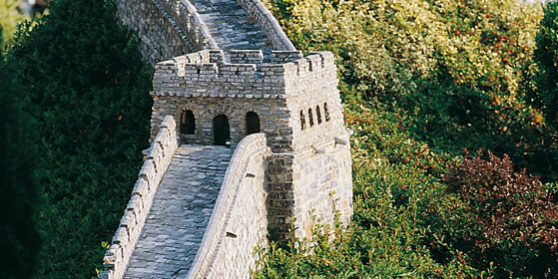In the 3rd century BC, the world’s greatest fortification was built under the first emperor of China with the aim of protecting the empire from nomad Mongolian tribes. Hundreds of thousands of workers, including convicts and political prisoners, were employed in building the Great Wall. It has been estimated that up to one third of all able-bodied men in China was enlisted to build and defend the wall as well as to keep it well supplied. In the 5th century, this inimitable structure prompted the Huns to concentrate their wars of conquest on Europe. But in the 13th century the Mongols succeeded in conquering China. Parts of the wall fell into ruin. In the next century the Mongols were driven out once again, the Ming dynasty came to power and the wall was given its present appearance. Only about one half of the original 5,000 kilometres or so still stands today. In the 17th century the wall lost its military importance because the empire’s borders extended far beyond the original defence line. The parts of the Wall that are close to tourist resorts are well preserved, some have been restored. Large parts of the Wall, however, are in a dilapidated state; its bricks are often even used for building houses or roads. Hence, a society was founded to protect the Wall.

